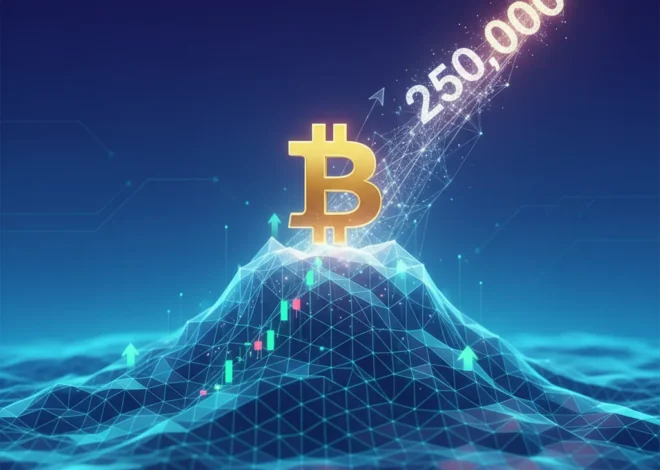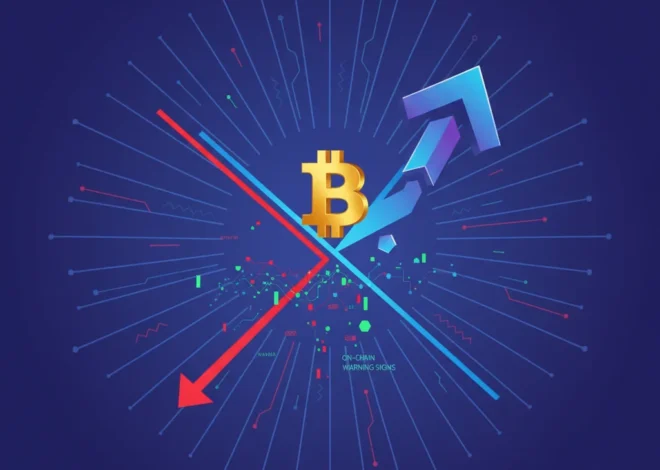
The Fed’s Next Move: Why Bitcoin’s Future Is Tied to Monetary Policy
In the intricate world of global finance, few relationships are as paradoxical and closely watched as the one between Bitcoin and the U.S. Federal Reserve. On one hand, Bitcoin was conceived as a decentralized alternative, a digital asset operating entirely outside the control of central banks and traditional financial institutions. On the other, its price action in recent years has become extraordinarily sensitive to the whispers and roars emanating from the Fed’s boardroom. Investors, from seasoned professionals to retail enthusiasts, are learning a crucial lesson: to understand Bitcoin’s next move, you must first understand the Fed’s playbook.
The current market environment is a masterclass in this dynamic. Bitcoin has been trading in a relatively tight range, exhibiting a holding pattern that mirrors the broader stock market. The reason? All eyes are on one thing: the Federal Reserve and its impending decision on interest rates. As one analysis puts it, the market is essentially waiting for the Fed to pull the trigger on a policy shift. This blog post will delve into the mechanisms behind this connection, explore the impact of monetary policy on digital assets, and analyze what the future may hold for investors navigating this complex landscape of modern finance and fintech.
The Unlikely Dance: Why a Decentralized Asset Cares About a Central Bank
To grasp this relationship, we must first understand the concept of market liquidity. In simple terms, liquidity refers to the amount of money flowing through the financial system. When the Federal Reserve implements “accommodative” or “dovish” policies, it is effectively turning on the taps and increasing liquidity. Conversely, “tightening” or “hawkish” policies turn those taps off, reducing the amount of money available.
Here’s how the Fed controls these flows:
- Interest Rates: The primary tool. Lowering the federal funds rate makes it cheaper for businesses and consumers to borrow money, encouraging spending and investment. This injects liquidity into the economy. Raising rates does the opposite, making borrowing more expensive to cool down an overheating economy and fight inflation.
- Quantitative Easing (QE) & Quantitative Tightening (QT): In QE, the Fed buys government bonds and other financial assets, pumping cash directly into the banking system. This floods the market with liquidity. QT is the reverse process, where the Fed sells assets or lets them mature without reinvesting, effectively pulling money out of the system.
When liquidity is abundant and the cost of borrowing is low, investors are more willing to take on risk in search of higher returns. This creates a “risk-on” environment. Assets perceived as having high growth potential, but also higher risk—like technology stocks and cryptocurrencies—tend to flourish. When liquidity dries up and rates rise, the opposite “risk-off” sentiment takes over. Investors flee to safer assets like government bonds and cash, and high-risk assets suffer.
Beyond the Closet: Vinted's Content Crisis and the Hidden Financial Risks of the Platform Economy
Bitcoin’s Evolution into a High-Beta Macro Asset
Initially, many proponents hailed Bitcoin as “digital gold”—an uncorrelated safe-haven asset that would protect wealth from inflation and economic turmoil. While it may yet fulfill that role, its behavior over the past several years has aligned it more closely with high-growth tech stocks on the Nasdaq index. It has become what traders call a “high-beta” asset, meaning its price movements are often an exaggerated version of the broader stock market’s swings.
The influx of institutional capital into the crypto space is a major reason for this shift. As large hedge funds, asset managers, and corporate treasuries began allocating funds to Bitcoin, they brought their traditional risk-management frameworks with them. For these large players, Bitcoin is often categorized within their “risk-on” portfolio allocation. Consequently, when their models signal a need to de-risk due to macroeconomic factors—like a hawkish Fed—Bitcoin is often one of the first assets to be sold alongside their tech stock holdings. This institutional behavior has tightened Bitcoin’s correlation with the stock market, particularly the S&P 500, a trend that was clearly observable throughout the recent rate-hiking cycle (source).
The table below illustrates how different asset classes typically perform under varying monetary policy regimes, providing context for Bitcoin’s current positioning.
| Monetary Policy Regime | Impact on Liquidity | Typical Winning Assets | Typical Losing Assets |
|---|---|---|---|
| Dovish (Low Rates / QE) | High / Increasing | Tech Stocks, Growth Equities, Bitcoin, Real Estate | Cash, Short-Term Bonds |
| Hawkish (High Rates / QT) | Low / Decreasing | Cash (High-Yield Savings), Short-Term Bonds, Value Stocks | Tech Stocks, Growth Equities, Bitcoin, Long-Duration Bonds |
| Neutral / Holding Pattern | Stable / Uncertain | Varies; focus on quality and specific sector trends | Highly speculative assets with no clear cash flow |
The Current Standoff: Inflation, Interest Rates, and a Market on Edge
We are currently in a period of prolonged monetary tightening. To combat the highest inflation seen in decades, the Federal Reserve has embarked on one of its most aggressive rate-hiking campaigns in history. This has systematically drained liquidity from the market, creating significant headwinds for assets like Bitcoin.
The market’s anticipation now centers on a “pivot”—the moment the Fed signals it will stop hiking rates and begin cutting them. This pivot is the “trigger” the market is waiting for. A rate cut would signal a shift back towards an accommodative policy, which would historically be bullish for risk assets. The expectation is that once the Fed begins to ease financial conditions, capital will flow back into assets like Bitcoin, potentially igniting the next major bull run. This is why every inflation report (like the CPI) and every statement from Fed Chair Jerome Powell is scrutinized with such intensity by the financial technology and trading communities.
The source article notes that a drop below key support levels for Bitcoin could occur if the Fed maintains its hawkish stance longer than expected, while a break upwards is contingent on a dovish signal (source). This perfectly encapsulates the market’s current dependency.
Beyond the Balance Sheet: Why Foodbank Queues Are a Critical Indicator for the Modern Economy
Future Scenarios and Implications for Investors
As we look ahead, the path for Bitcoin and the broader economy is largely dependent on the Fed’s actions, which in turn are dependent on inflation data. This creates a few potential scenarios for investors to consider.
Scenario 1: The “Soft Landing” and Fed Pivot (Bullish Case)
In this scenario, inflation continues to cool down towards the Fed’s 2% target without causing a major recession. This would give the central bank the green light to begin cutting interest rates in the near future. For Bitcoin, this is the most optimistic outcome. A rate-cutting cycle would inject fresh liquidity into the market, lower the appeal of holding cash, and likely trigger a significant flow of capital back into the crypto and blockchain space. This is the “trigger” being pulled that could propel Bitcoin towards new all-time highs.
Scenario 2: Sticky Inflation and “Higher for Longer” (Bearish Case)
If inflation proves more persistent than anticipated, the Fed could be forced to keep interest rates elevated for an extended period, or even hike them further. This “higher for longer” environment would be detrimental to risk assets. The high cost of capital would continue to suppress investor appetite for speculative investments. In this case, Bitcoin could see a significant price correction, breaking below established support levels as investors capitulate and move to the safety of high-yielding, low-risk government bonds.
Scenario 3: Economic Downturn Forces the Fed’s Hand (The Wildcard)
A third possibility is that the aggressive rate hikes eventually trigger a significant economic recession. While a recession is negative for most assets, it would almost certainly force the Fed to cut rates aggressively to stimulate the economy. The initial market reaction would likely be negative for Bitcoin, but the subsequent wave of monetary stimulus could create a powerful tailwind for a strong recovery, similar to what was seen after the initial COVID-19 crash in 2020.
For those involved in investing and trading, the key takeaway is that macroeconomic analysis is no longer optional in the world of digital assets; it’s essential. Understanding the principles of economics and monetary policy is just as important as understanding the underlying financial technology of the blockchain.
The New Energy Silk Road: How US LNG is Fueling Ukraine's Future and Reshaping Global Finance
Conclusion: A New Paradigm for Crypto Investing
The story of Bitcoin is no longer just one of technology, decentralization, and cryptography. It is now deeply interwoven with the narrative of global macroeconomics. The Federal Reserve, the institution Bitcoin was designed to circumvent, has ironically become one of the most powerful drivers of its price. While the asset remains a marvel of fintech innovation, its market behavior is, for now, tethered to the traditional financial world’s cycles of boom and bust, driven by the flow of liquidity from central banks.
Investors waiting for Bitcoin to make its next decisive move should therefore be looking not just at blockchain metrics, but at inflation data, employment reports, and the pronouncements of the Federal Reserve. The trigger for Bitcoin’s next chapter will likely be pulled not in a crypto exchange, but in a central bank’s boardroom. Understanding this dynamic is the key to successfully navigating the future of digital asset investing.


